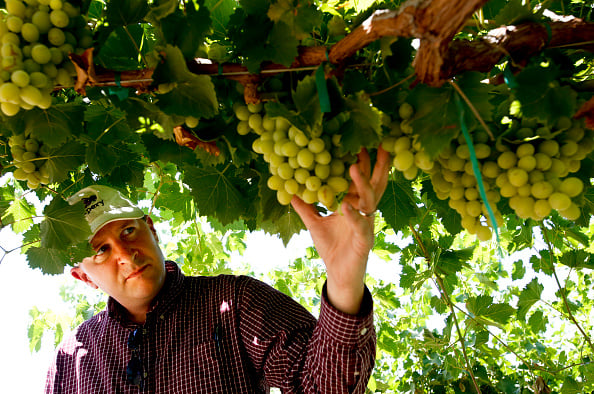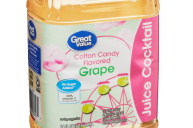They may look like normal, everyday, green grapes, but there's nothing everyday about this fruit. Cotton Candy grapes taste, well, exactly like cotton candy. They're sweet and juicy and have a hint of vanilla, with all the best tastes of pink spun sugar and none of the sticky mess.
Cotton Candy grapes are a product of the time-honored practice of plant breeding, using different varieties of plants to create a new hybrid. These still-rare grapes may seem like designer fruit, but horticulturalist David Cain wasn't trying to create something exclusive when he first developed cotton candy grapes in 2011. His goal was to prioritize taste and give consumers more options when they go to the grocery store and to do it without the use of artificial flavors or genetic engineering.

Grapery
Cain manages all the fruit breeding for International Fruit Genetics, a Bakersfield, California, company that is focused on creating superior varieties of grapes and stone fruit.
In a 2013 interview with NPR, Cain noted that growers have been breeding fruit to better handle shipping and storage, which makes for a hardy grape species, but not necessarily a good-tasting one. He also talked about the many varieties of apples found in the store, and how grapes could be like that. "We weren't quite sure that it was something the general public would like because it's kind of an unusual flavor," Cain said.
The Cotton Candy grapes are grown in the U.S. by California-based distributor Grapery, who shares a founder with International Fruit Genetics. The grapes have an incredibly short growing season, roughly mid-July through early September. The Grapery ships the Cotton Candy grapes to stores all over the country, but as word has spread about the unique cotton candy flavor, they've become hard to keep in stock.
International Fruit Genetics has also partnered with a grape producer in Mexico to hopefully provide a longer growing season for the sugary sweet grapes. The Mexican grapes, which are the same variety as the California grapes, are grown in May and June.

(Photo by Anne Cusack/Los Angeles Times via Getty Images)
The Cotton Candy grape has about 12 percent more sugar than a regular table grape and almost no tartness. That sweet taste comes from the two plants that make up the hybrid version: Vitis vinifera, which is the most common grapes species you'll find in America (and also happens to be the main grape for wine production), and a Concord-like grape since Concord grapes are known for their flavor, though they're generally used for jams, jellies, and juice.
The process of creating these new hybrid grapevines is intense. There's no genetic modification here (these grapes are non-GMO), only painstaking work to cross-fertilize the plants and then grow them in individual test tubes before the new vines can be planted in a field.
The Cotton Candy grape isn't the only interesting grape variety you can find from the Grapery. They also grow Moon Drop, Tear Drop, and Gum Drop grapes, as well as a line they call Flavor Promise.
Because the growing seasons are so short, most of these varieties are only available in limited quantities, so if you want to try them, keep an eye out at your local store. Grapery distributes to stores like Whole Foods, Kroger, Wegmans, The Fresh Market, Food City, Stop and Shop, Sprouts and Sam's Club. They do have a store locator, but it's always best to call your local store first to check and see what fruit they have in stock.
Stores such as Costco, Trader Joe's, and Sam's Club are your best bets to pick up the grapes, which go for around $3-$4 a pound.
How to Serve Cotton Candy Grapes
These sweet grapes don't need any special preparation, except for a quick rinse under the faucet to get them clean. Pop some in the freezer for a cool snack or add them to your fruit tray with cream cheese dip for a sweet bite or to this Mojito Fruit Salad.




